View Data from Different Storages - Logical Storages
Required Permissions
This section requires the Storage Management permission from your Domain's administrator.
Check What are the Design Tasks? to learn more about permissions to work with Design Mode and other tools.
Sometimes, you need to build applications that display data coming from two or more Storages in your eLegere Home. It would be time-consuming to create a new Storage and fill it with the data you need from the desired Storages. Maybe, you only need a subset of those data and would require further time to select which data to copy & paste.
Logical Storages spare you this issue. Logical Storages display fields from other Storages in a single table. Also, you can filter which data to display in the table from the joined Storages. (See Storages Types in What Are Storages and Why Do You Need Them? for more information.)
Learn how to create a Logical Storages to join two or more Storages and decide the criteria to filter their data.
Attention
You can build any application starting from Logical Storages to view data and trigger processes, but you can't write data in Logical Storages. Logical Storages only display field columns from other Storages, they don't store data.
Attention
This section assumes that you have only the Storage Management permission besides the basic permissions to access your Domain (i.e. Domain Viewer).
This implies that you will see only the Storages tab and the Applications tab.

In case you have been assigned other permissions, you could see other tabs in the sidebar besides Storages and Applications.
Follow the steps below to create a Logical Storage.
-
In the Home, click on the Storages tab in the side bar.
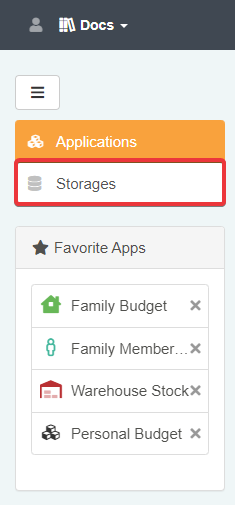
-
You will land in the Storages panel.

Click on the Add Storage button above the panel.
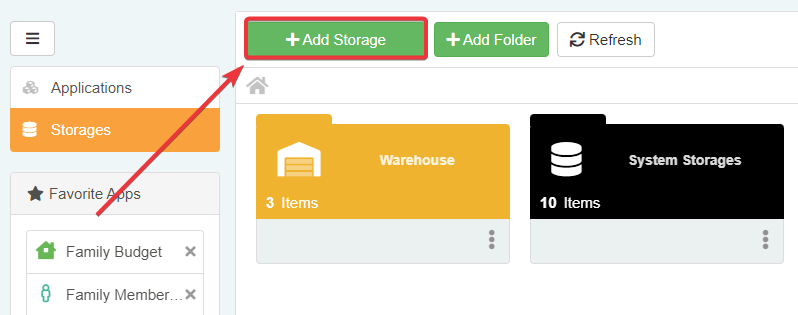
-
Choose Logical from the window's options.

-
Choose from the window the Storage that you want to use as first Storage in the Logical Storage's join.
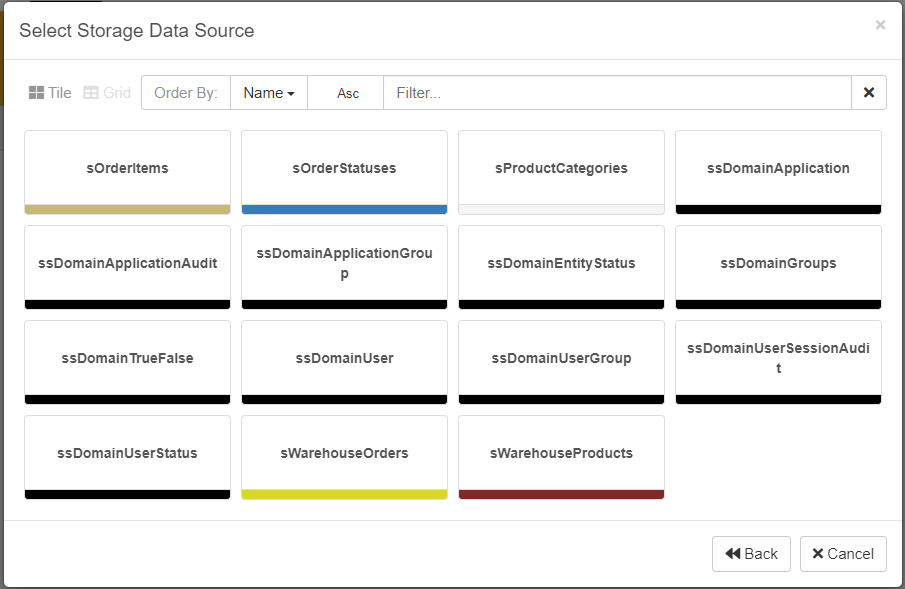
You can view the list both as Tile and as Grid. Also, you can sort the results in Ascending or Descending order according to the preferred criteria.

The action leads you to the Storage Editor.
-
You will land in the Storage Info sub-panel.

Fill the following information:
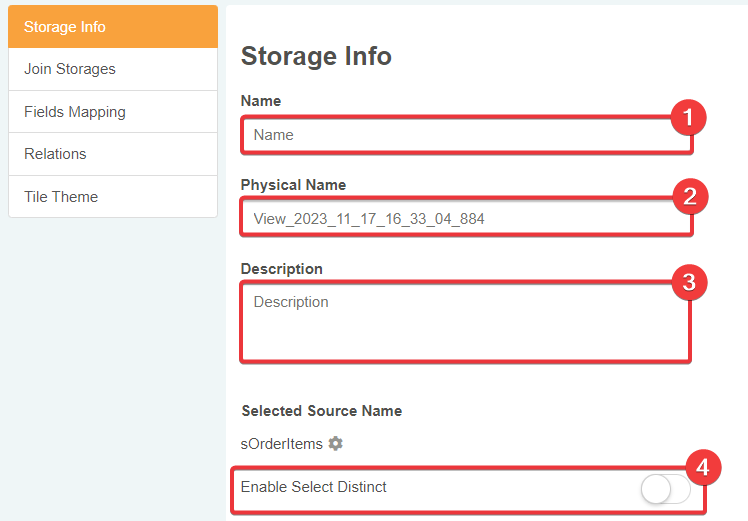
- (1) Name: The Storage's name displayed to the users.
- (2) Physical Name: The Logical Storage name on the database. Administrators and users working with the eLegere database identify this Logical Storage through this name. By Default, eLegere assigns a name with the following format based on the creation date:
View_year_month_day_hour_minute_seconds_milliseconds. Choosing a name likeVIEW_STORAGE_NAMEhelps to identify the Storage when you must work directly with the eLegere database. - (3)
optionalDescription: Add a brief description to explain what the Storage contains. - (4)
optionalEnable Select Distinct : If enabled, the Logical Storages takes each value from the Storages only once without repetitions.
-
Click on the Join Storages tab in the left sidebar.
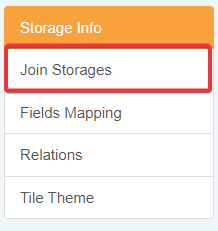
-
You will land in the Join Storages sub-panel. Click on the Add Join Configuration button in the upper-right corner of the sub-panel. The action opens the window in which you can choose the other Storages to join the data.

-
You will open the Add Join Configuration window.
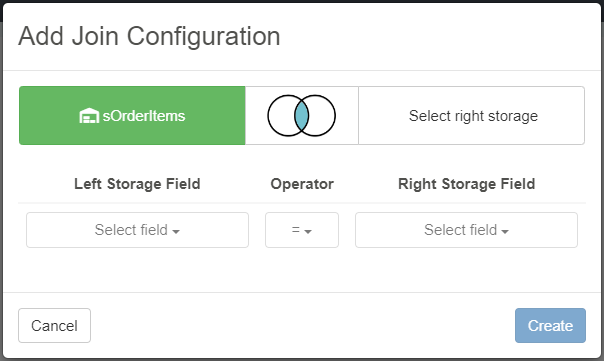
Choose another Storage to join the data with the Storage chosen at step 4
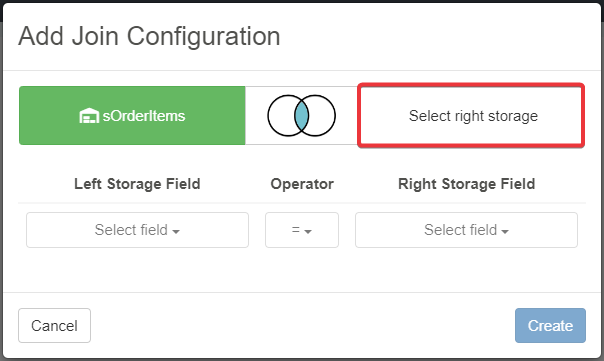
-
Click on the diagram to choose how to join the data between the two Storages.

The options available are the following:
- INNER Includes only the values in common between the selected fields from the Storages.
- LEFT Includes only the values in common between the fields and those from the left Storage.
- RIGHT Includes only the values in common between the fields and those from the right Storage.
- FULL Includes all the data from both the Storages.

-
Choose the (1) a field from the right Storage, (2) an operator for the comparison between fields from the drop-down list, and (3) a field from the left Storage.
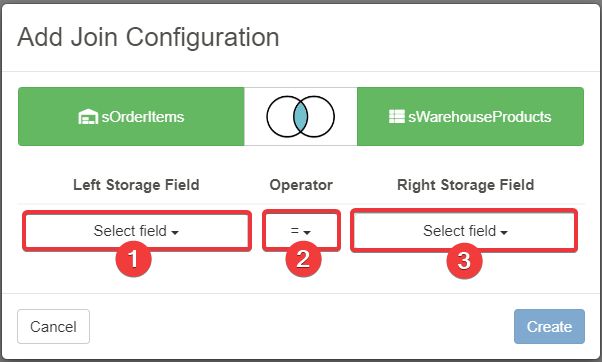
The Logical Storage will filter the data satisfying the operator.

-
Click on the Create button when done. (If you have changed your mind, click on Cancel to abort the choice.)
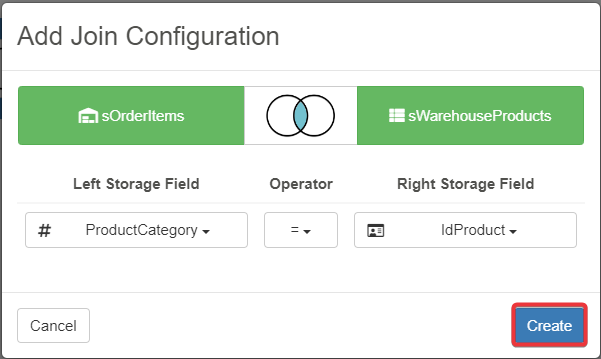
-
Your configuration will appear in the Join Storages sub-panel.

Note
You can add as many Join Configurations as you want. The Logical Storage will include the data satisfying all the configurations.
Hint
At any time, click on the button on the Join Configuration to open again the configuration and modify its settings.

Hint
Click on the button on the Join Configuration to delete it.

Click on Fields Mapping tab in the left sidebar.
-
You will land on the Fields Mapping sub-panel. Fields Mapping summarizes all the joined fields from the Storages.

Follows a brief explanation of the info and settings on the table:
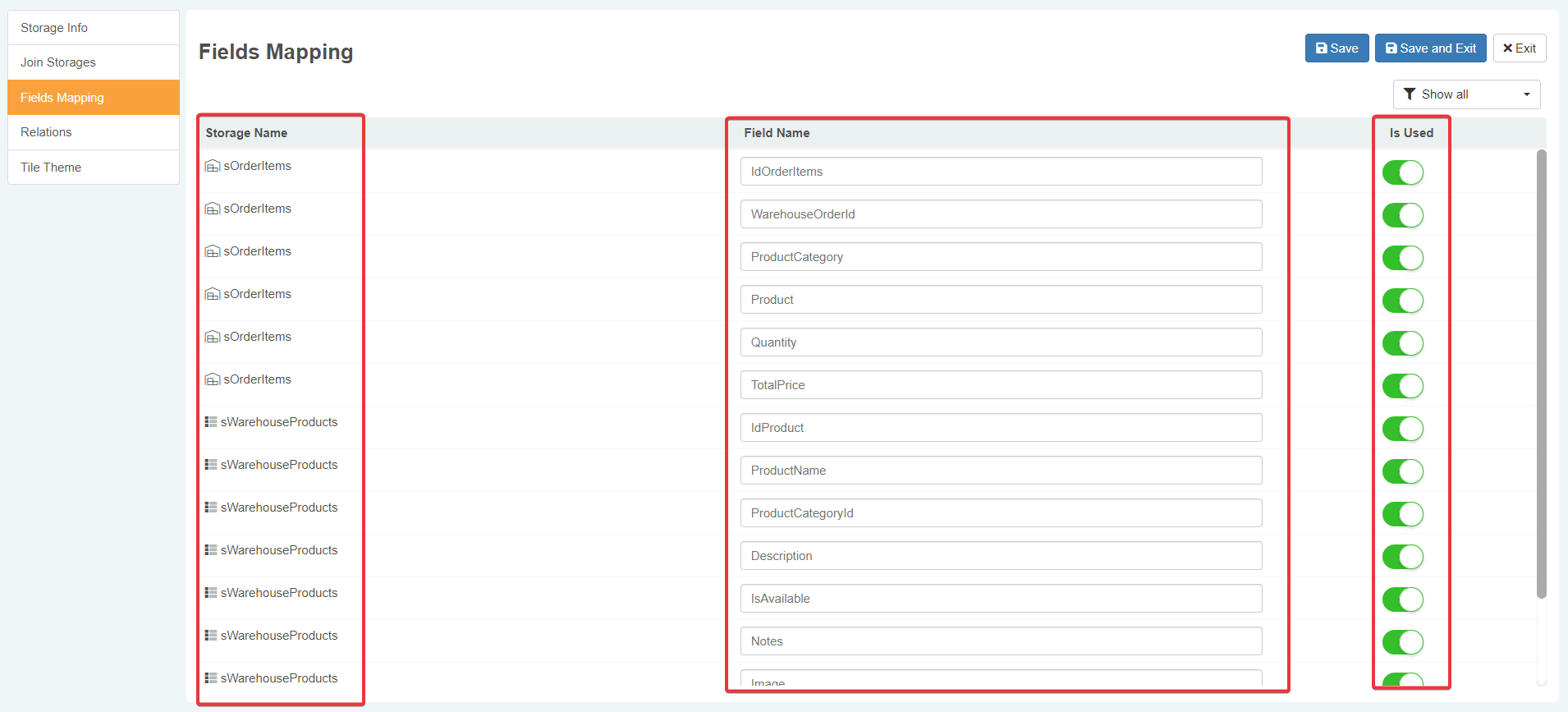
- Storage Name: The Storage from which the field comes.
- Field Name: You can label the field differently from the original Storage. By default, Fields Mapping employs the same name from the original Storage.
- Is Used: Turn ON the toggle-switch to use the field in the applications. If turned OFF, the applications won't employ the field. By default the option is turned ON.ù
Change the settings according to your needs
-
Click on the Tile Theme tab in the sidebar. The action leads to the sub-panel where you can customize the Storage's appearance in the Home.
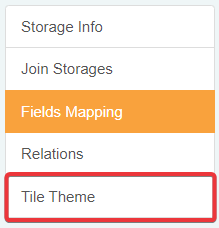
-
This step is optional. In the Tile Theme sub-panel customize the appearance options you prefer.
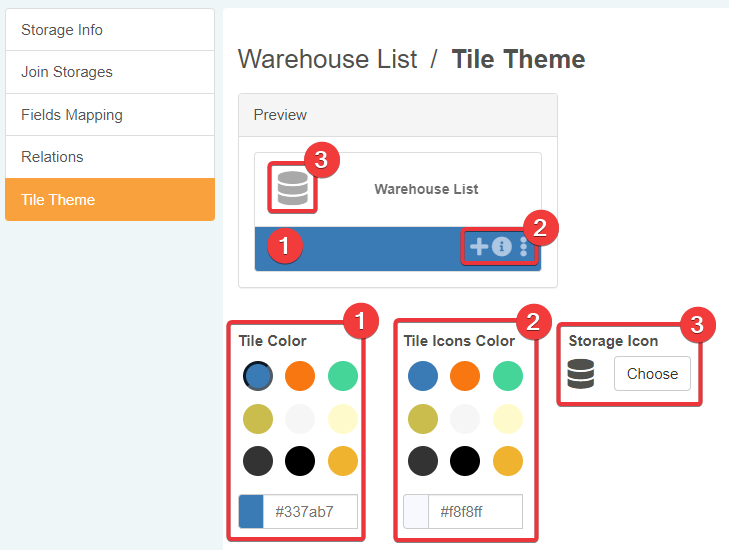
- (1) Tile Color Changes the color of the bottom of the tile.
- (2) Tile Icons Color Changes the colors of the actions' icons.
- (3) Storage Icon Opens a menu to choose a icon for the Storage.
-
In the upper-right corner of the Storage Editor:
- click on Save to save the changes without leaving the Storage Editor.
- click on Save and Exit to save the changes and leave the Storage Editor
- click on Exit to abort any change.

The Logical Storage will appear in the Home in the Storages panel.
Logical Storages and Relations
You can establish Relations between Logical Storages and other Storages in the same way of Blank Storages.
Follow the same steps described in How to Build Relations between Storages in Create an Empty Storage to Be Filled to establish a Relation between a Logical Storage and another Storage.
Success
You have created a Logical Storage by joining and filtering data from two or more Storages.